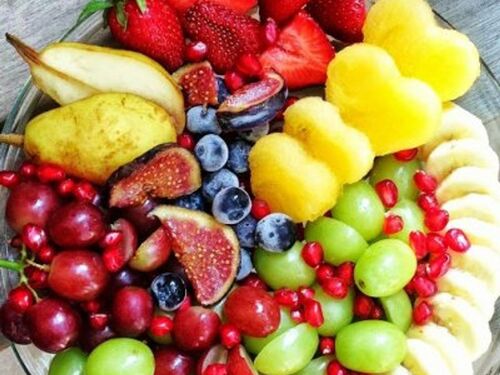

Blue has been found to be the only appetite suppressant in the color spectrum. Many weight loss plans suggest the use of blue plates to eat food out of because less food is eaten due to the nature of the color.
Color plays an extremely important role in the everyday lives of humans. It can affect people’s thinking, actions, and reactions. Color sends subliminal messages to the brain, which is why companies spend a lot of time on choosing the right colors when designing their products. Food is one of the most important necessities in life that are influenced by color. The human appetite, choice of food, and interior designs of restaurants are some examples that are affected by color.
Blue has been found to be the only appetite suppressant in the color spectrum. Many weight loss plans suggest the use of blue plates to eat food out of because less food is eaten due to the nature of the color. Studies have also shown that people tend to eat less junk food out of the refrigerator if a blue light is placed inside. The use of blue lights in dining areas has also led to less consumption of food. The reason for the suppressant nature of the color blue is its relative absence in nature. Most of the vegetables we eat are green or red and most meat is red. Other than blueberries, it is not easy to find blue as a natural color. As a result, the color blue does not have an automatic response towards our appetite.
Another reason why blue is an appetite suppressant is because of the primal nature of humans. When searching for food, people before us used to avoid eating objects colored black, purple, or blue because these colors were a sign for potentially poisonous food.
One of the most important factors in influencing peoples’ choice of food is its appearance. The Romans were one of the first humans to recognize the fact that people "eat with their eyes." It has been found that eighty percent of all impressions are made by one’s eyesight. Hence, color has a great impact on the appeal of different foods. When a person sees food, neurons are immediately set off in the hypothalamus, which is the beginning of a long chain of hormonal release in the human body. Studies done with subjects eating food in the dark have resulted in people not enjoying the food as much because of the absence of the appearance of the food. Many people refuse to even try food because of its appearance and color. As a result, companies have to put an emphasis on the choice of color for their food products since many products fail in the market because they have a bad appearance, even if the taste, smell, or texture is good. For the most part, green, brown, and red are generally accepted by humans as colors for food, whereas blue and black are often left untouched.
Color and light have significant influences on the appearance of food. As a result, restaurants have to focus a lot on choosing the right colors and lighting as part of their interior designing. Since color depends on the light being used, restaurants have to make sure they choose the correct combination of both. For example, if a dining room were to have only red neon lights, a rare steak would appear whitish while salads would have an unappetizing black or dark gray color.
Most restaurants use light-colored plates since they make the food look fresher and more appetizing and because cleanliness is usually associated with the color white, which is also light. Brown dishes are avoided because they take away the color from the food since a lot of the food humans eat is colored brown. Blue and turquoise backgrounds are often used in restaurants since they make meats and other red foods look brighter. Turquoise backgrounds can also give customers a feeling of greater comfort because rooms painted turquoise have been found to appear more spacious. Red usually makes rooms appear smaller than their actual size.
The same concept applies to the value (darkness or lightness) of color. Light colors tend to make rooms look larger, while darker colors make rooms appear smaller. Some restaurants choose to go with darker colors in order to create a more intimate environment for the customers. Different colors also tend to suggest different temperatures.
For example, green, blue, and violet are considered to be cool colors, while red, yellow, and orange are considered to be warm colors. Therefore, the choice of color can also seem to effect the physical environment in a restaurant. Due to all these different factors, restaurant owners have to be extremely careful in choosing the right colors and lighting when designing their restauran
The Relationship Between Food and Color
Healthy Mind and Body
